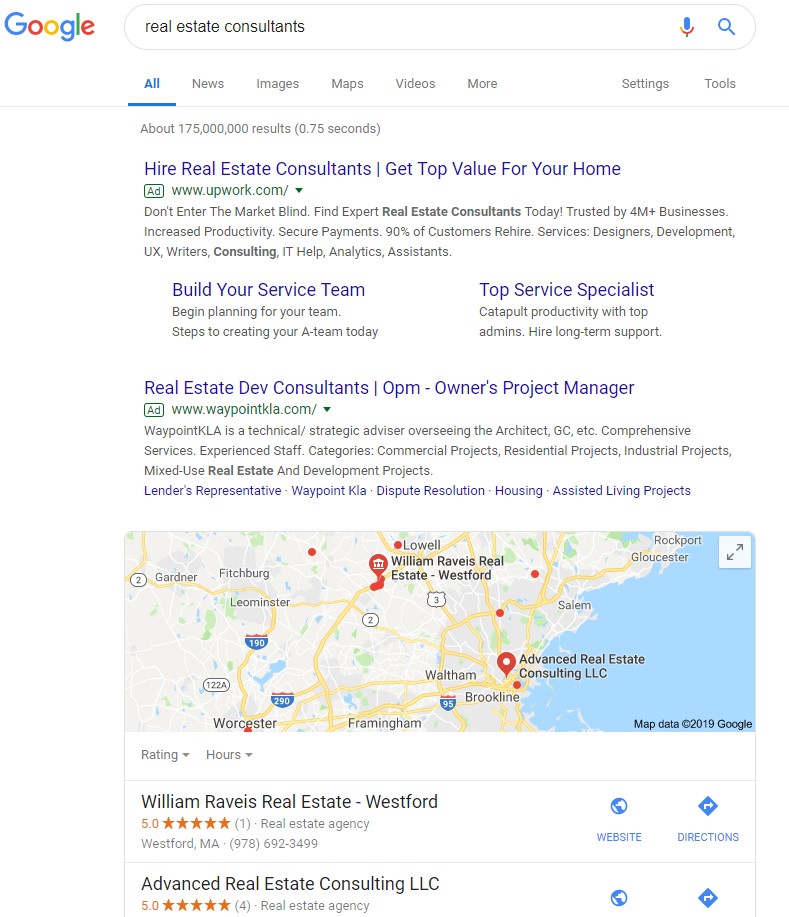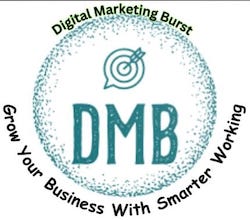In a recent post on digital marketing acronyms my partner, Chuck, broke down PPC and SEO – pay-per-click marketing and search engine optimization – and how they are both part of SEM, or search engine marketing. And while SEO and PPC – in this post I’m referring mainly to Google Ads – are separate search tactics, they work best when coordinated together. So, it’s time to break down those silos – if they exist – and gather your paid and organic search teams at the conference table!
First, let’s back up a bit… back in late 2016, Google changed up the look and functionality of the search engine results page (SERP). They removed the right-side ads and placed them at the top and bottom of the organic listings only. They did go from three to four ads on top, however, providing one more opportunity to get your paid ad above the fold. Now, with ads on top, they blend into the organic listings more than ever. If you can rank organically for non-brand terms and leverage Google Ads for the same terms, you can effectively dominate the first SERP. This is a huge opportunity, though not an easy thing to accomplish. That said you certainly can take advantage of Google Ads to further your SEO results.
Here’s how…
Faster keyword research with Google Ads insights
When it comes to SEO, we spend a good deal of time researching which keywords and phrases we should optimize a website around. While it used to be that we could dive into Google Analytics and see organic traffic broken down by keywords, we now see (not provided). This data has been shielded by Google since late in 2011 as part of their privacy initiatives, but really, it’s likely just a way for Google to boost their paid search business. Call me a conspiracy theorist. It’s okay that Google’s got financial motives. I get it. I’d probably do the same thing in their shoes and it just means we need to be creative.
Here’s what we look at when it comes to keyword research:
- Competitors – what are your top three or four competitors optimizing their website for? We certainly don’t want to copy exactly what they are doing but we want to be aware of what might be working for them.
- The current website content – what is the existing (or planned) messaging of the site? How is the brand speaking to products, solutions, and services that are being offered? While we can certainly make adjustments and recommendations to product or service positioning, we often need to work within an existing brand messaging framework, and often this leads us to certain keywords and phrases – at least as a starting point.
- Keyword competition – how competitive are the keywords we want to rank for organically? We certainly want keywords with decent search volumes, but if we populate our list with only those keywords with large numbers of searches, we will likely be spinning our wheels trying to rank. A combination of competitive and not-as-competitive keywords is a good way to go but determining which variations can be challenging.
- User intent – what we think we want to rank on for keywords versus what users are actually searching for can often be at odds with each other. A very basic example would be a client that provides real estate consulting and training. If we conduct a search for “real estate consultants” here’s what we get:

You can see right away that the first thing that Google does is show you some ads for real estate consultants designed to build your real estate agency and then an ad for real estate project management. It then dives into local real estate offices based on what Google has learned [through it’s own Ai] is the typical intent of the user (when conducting this search for “real estate consultants”). Google is showing results for users seeking realtors. In this case Google is telling us this keyword needs further refinement for our client’s usage. In other words, we may want to use this keyword, or we may not, but we should try different variants to get closer to the user our client is seeking.
In our standard SEO service, after the site has been optimized for our selected keywords, we begin to collect and monitor data in Google Analytics. Depending on the traffic volumes to the site on a monthly basis, collecting an amount of data needed to make informed decisions can take some time. For most of our clients, this can be 3-4 months. Armed with this data, we analyze keywords for:
- Number of impressions – we certainly want our keywords to be shown in Google for organic searches and when this happens, we get an impression. The more impressions we get, the more Google is showing our site for that keyword search.
- Click through rate (CTR) – when someone clicks on a search result for our website, we get a click. The click through rate (CTR) is determined by dividing the number of clicks by the number of impressions. Needless to say, we want decent CTRs, which comes with ranking well. Usually, ranking in the top 5 will get you CTRs above 5% and below that the rate tails off significantly.
- Bounce rate – when someone clicks on a link at Google and hits our site, we want them to hang around and dive deeper into the site. This tells us that they are finding value from clicking and that our site is delivering what they expected to find. If they hit our site and go right back to their Google search, we get a bounce. The bounce rate is calculated by the total number of one-page visits divided by the total number of entries into a website. Needless to say, we do not want high bounce rates, but often time if we find our keywords are showing high bounce rates that we need to make adjustments.
- Average session duration – How engaged are organic visitors is also something we like to track. If this metric is low then we ask are we attracting the right users.
All of these metrics around keywords – as we build our list, and after the fact – can be identified with metrics we can get from Google Ads data. The beauty of Google Ads in these instances is that we do not need to 1) optimize a website and/or 2) wait several months for data to inform our decision making. The speed at which we can gather data in Google Ads can make a big difference.
Put some budget aside and create a Google Ads campaign, breaking down Ad Groups to reflect the key sections of your website. This might be product or service groupings. You can then add in keywords and create ads to cover them.
Be sure to A/B test your ad messaging, using keywords, and unique ad appeal, as this is another thing that you can test quickly with Google Ads. It will help you make informed messaging adjustments on your main site.
It’s likely that within just a month or so of Google Ads data collection, you’ll be able to make some inferences on what keywords are resonating with your target audience. Then you can make the adjustments in your SEO efforts.
—
If you’d like to discuss PPC or SEO with us, please feel free to reach out any time. Free, no obligation consultations are welcome!






